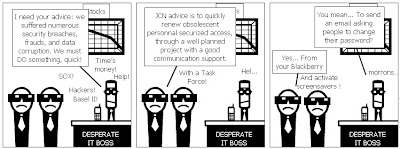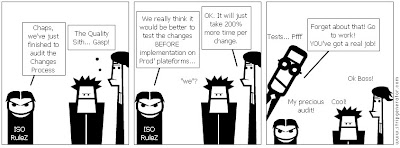A « Frozen Zone » is a well known concept of the IT Production : at some critical calendar dates, all changes will be frozen (ie : blocked, not iced) to allow a « smooth » run of some vital jobs. Typical frozen zones include the last and first days of the month, quarter and year (to allow accountancy matching, invoicing or inventory check-up for example). Some frozen zone can be declared in summer, while all the technical experts are away on vacation, or when a critical production run is performed for an usual order in a factory…
The “Frozen Zone” comes with two paradigms:
First, it’s a further proof that one of the foremost (the main?) causes of incidents are changes (many of those being corrections to previous changes).
Second, no matter what you do, you can’t change human nature (even with process consultants): some people will always try to sneak around the Frozen Zone, by obtaining derogations for THEIR changes.
Those people tend to be (according to their own opinion of course), “the only ones who’ve got a real job”…
That’s why, even in Frozen Zone, critical incidents occur, by the fault of changes…













































